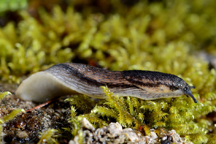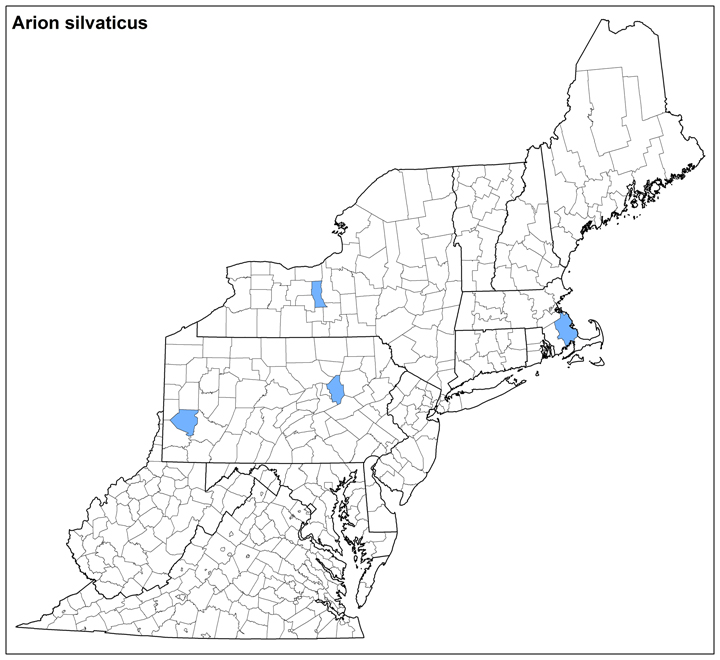Land Snails

Photo: Arion silvaticus is most similar to A. fasciatus and A. circumscriptus. Image © Roy Anderson
Click photo to enlarge.
Arion sylvaticus (Lohmander, 1937) (non-native)
Family: Arionidae
Common name: Forest Arion
Identification
Length: 30-40 mm
The dorsum is gray, fading to white towards the bottom of its sides. A dark, prominent stripe lies along each side of the body and the mantle, with the lower edge of the stripes more distinct than the upper. The grooves in the skin are dark. There is a slight keel toward the tip of the tail. The sole is white, and the body mucus is clear. The body is bell-shaped in cross-section (Kerney & Cameron, 1979; Wiktor, 1983).
Arion sylvaticus resembles A. fasciatus and A. circumscriptus, to which it is closely related (Kerney & Cameron, 1979). Reproductive characters distinguish the three species (see Grimm et al., 2009).
Ecology
The slug may be found in mesic deciduous forests, particularly beech forests, and is especially common on mountains and in valleys (Wiktor, 1983; Kappes, 2008). It takes shelter in leaf litter and under logs (Wiktor 1996). It can be a pest species of croplands and gardens (Grimm et al., 2009).
Taxonomy
This species’ original published name was Arion circumscriptus var. silvaticus.
Distribution
This European species has been established in southeastern Canada, some of the west coast of the US and Canada, and some of the northeastern US. A. silvaticus has been found recently in Massachusetts (Plymouth Co.), New York (Seneca Co.), and Pennsylvania (Allegheny and Columbia Counties). (Note that museum records may incorrectly classify this species and A. circumscriptus under A. fasciatus [Grimm et al., 2009.)
Conservation
NatureServe Global Rank: G5, Apparently secure.
Megan Paustian 6/2017
Range Map (Click to Enlarge)


